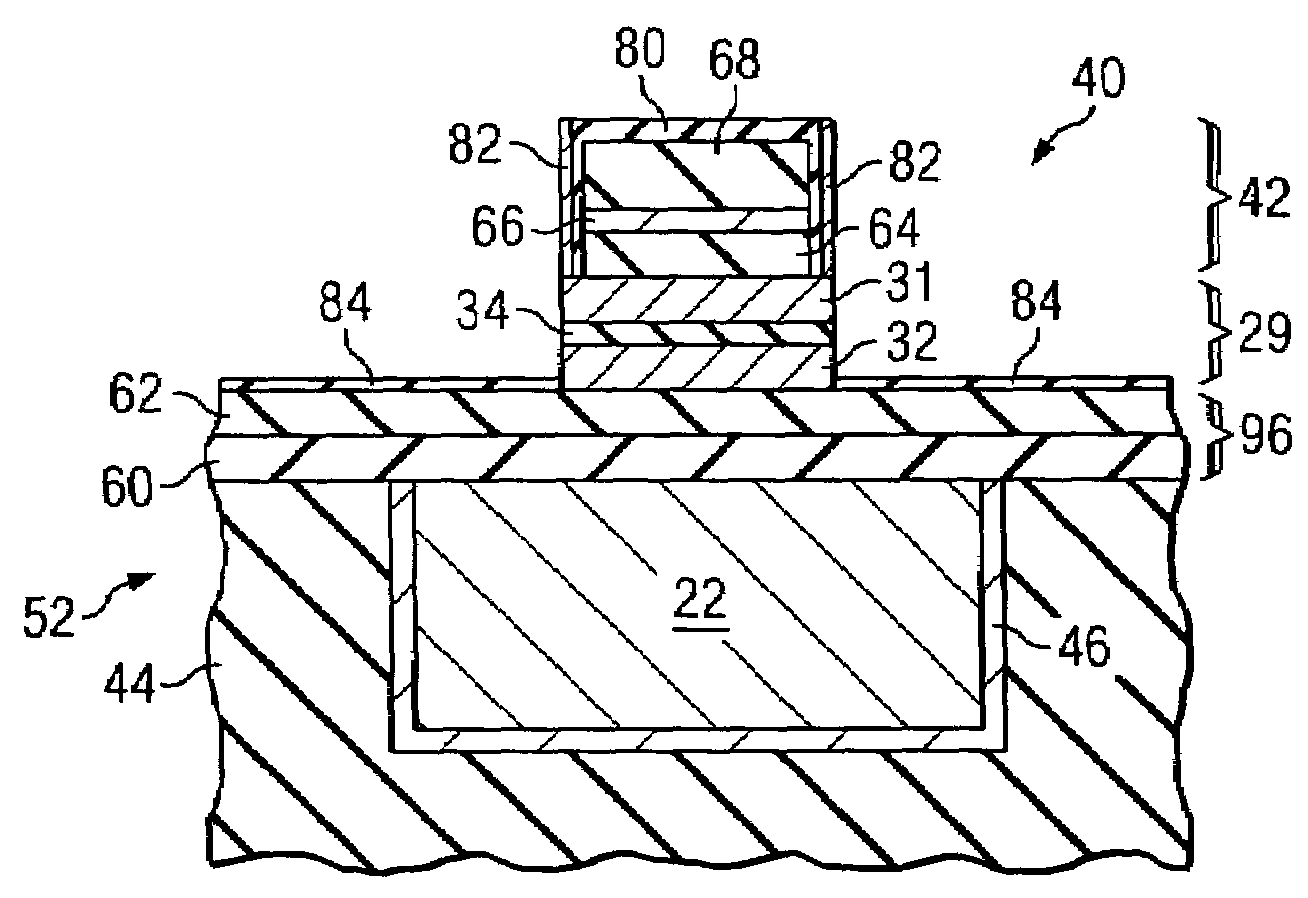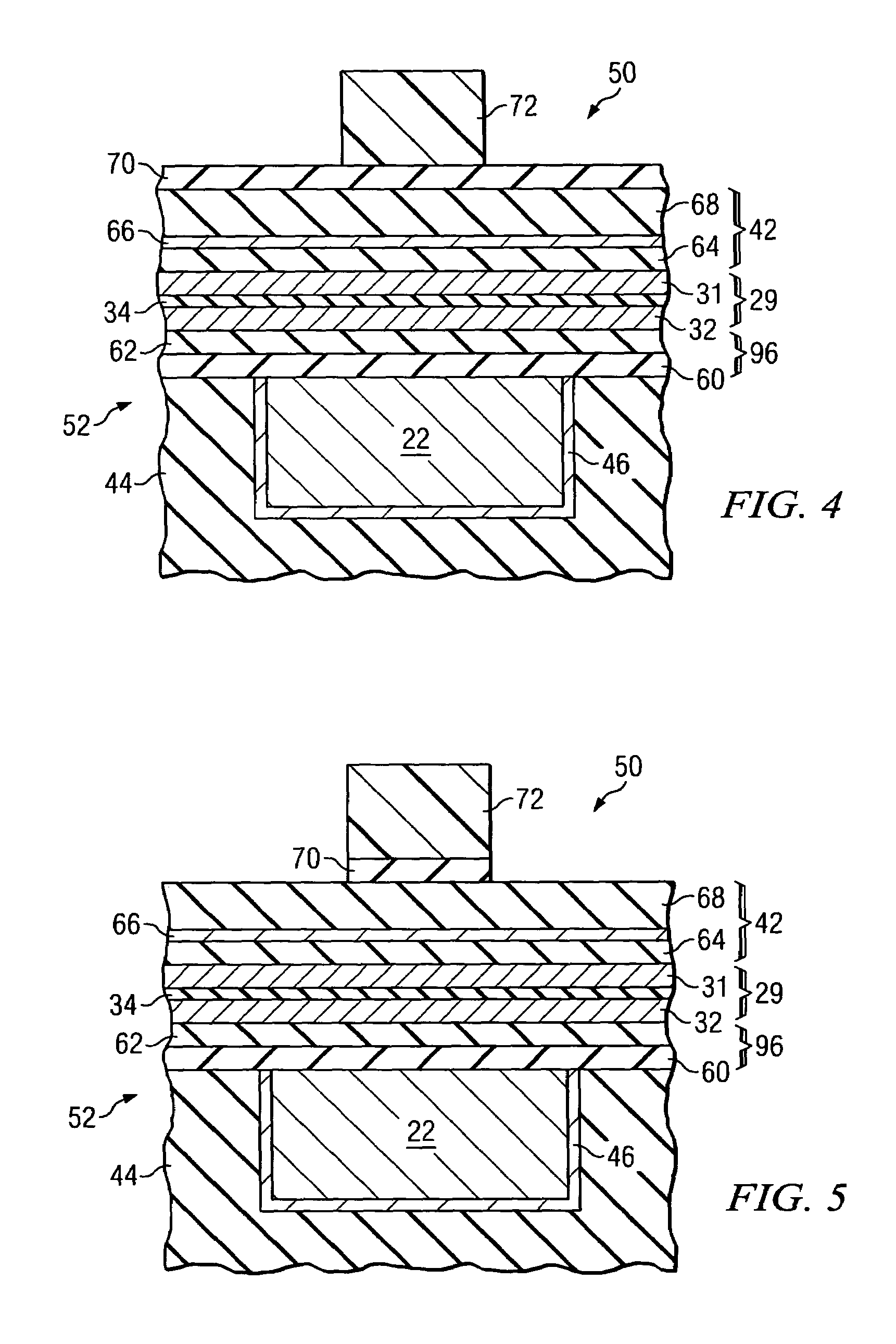Fabrication process for a magnetic tunnel junction device
a tunnel junction device and fabrication process technology, applied in semiconductor devices, solid-state devices, instruments, etc., can solve the problems of high temperature stress experienced by the device, discharge of displaced particles during the process, damage to the device,
- Summary
- Abstract
- Description
- Claims
- Application Information
AI Technical Summary
Benefits of technology
Problems solved by technology
Method used
Image
Examples
first embodiment
[0029]Still referring to FIG. 4, the initial structure 50 of the first embodiment includes a bottom tantalum nitride layer 60 over the underlying layer 52. A tantalum layer 62 is over the bottom tantalum nitride layer 60. An MTJ stack 29 is over the tantalum layer 62. A tantalum nitride cap layer 64 is over the MTJ stack 29. A titanium layer 66 is over the tantalum nitride cap layer 64. A titanium nitride layer 68 is over the titanium layer 66. An anti-reflective coating (ARC) layer 70 is over the titanium nitride layer 68. A patterned photoresist layer 72 is over the ARC layer 70. The photoresist layer 72 may be patterned using conventional methods, for example.
[0030]Tables 1 and 2 below provide illustrative process parameters that may be used for an embodiment of the present invention. Table 1 provides some preferred process parameters and conditions that may be used. The values provided in Table 1 are merely illustrative and these values may be varied thereabout to also provide p...
second embodiment
[0060]FIG. 18 shows the structure 50 after the ARC layer 70 is opened in alignment with the patterned photoresist layer 72. In the second embodiment, the hard mask 42 is etched and patterned completely before removing the photoresist layer 72, as shown in FIG. 19. As shown in FIG. 20, the sides of the hard mask 42 are plasma oxidized during (or during and after) the removal of the photoresist layer 72 (and the ARC layer 70) using an oxygen containing plasma, such as an O2 and Ar gas mixture, for example. If needed or desired, the oxygen-based plasma used to remove the photoresist layer 72 and ARC layer 70 may be continued after these layers 70, 72 are removed to further plasma oxidize the top surface of the hard mask 42.
[0061]An advantage of this process flow of the second embodiment is that the hard mask 42 may be oxidized using the same etch recipe step that is used to strip the photoresist layer 72 and ARC layer 70. A possible disadvantage of the second embodiment is that a fence...
PUM
 Login to View More
Login to View More Abstract
Description
Claims
Application Information
 Login to View More
Login to View More - R&D
- Intellectual Property
- Life Sciences
- Materials
- Tech Scout
- Unparalleled Data Quality
- Higher Quality Content
- 60% Fewer Hallucinations
Browse by: Latest US Patents, China's latest patents, Technical Efficacy Thesaurus, Application Domain, Technology Topic, Popular Technical Reports.
© 2025 PatSnap. All rights reserved.Legal|Privacy policy|Modern Slavery Act Transparency Statement|Sitemap|About US| Contact US: help@patsnap.com



